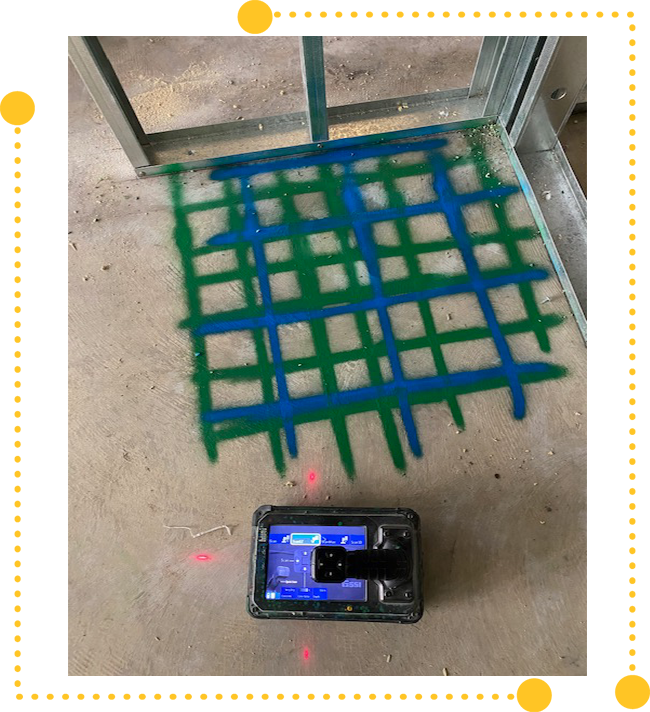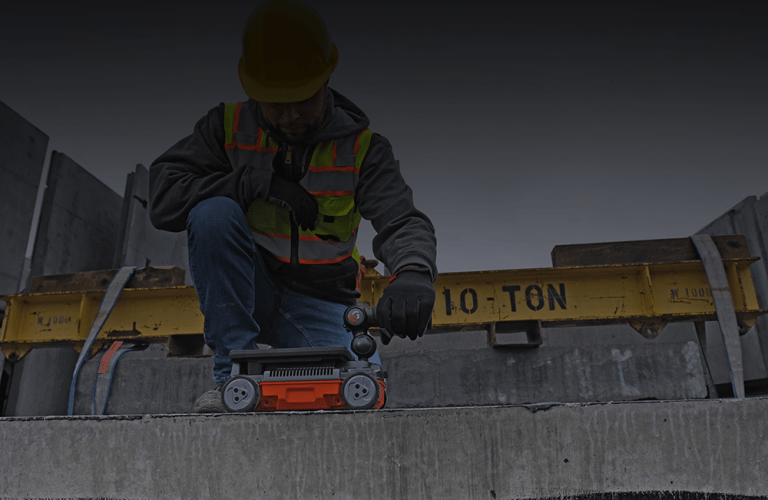RainierGPR Concrete Scanning: Precision and Security for Building Jobs
RainierGPR Concrete Scanning: Precision and Security for Building Jobs
Blog Article
The Value of Exact Concrete Scanning in Finding Underground Hazards
In the realm of construction and infrastructure development, the significance of exact concrete scanning can not be overemphasized. Underneath the relatively solid ground lie intricate networks of utilities, pipes, and various other subsurface frameworks that are often unnoticeable to the naked eye. The ability to accurately discover and map these below ground dangers is not simply a matter of comfort yet a crucial facet of making certain the safety and security of both construction employees and the stability of the project itself. By deploying innovative scanning innovations and approaches, professionals can discover surprise dangers, avoid costly problems, and ultimately lead the method for smoother and safer building and construction endeavors.
Advanced Scanning Technologies for Detection
Innovative radar systems are changing the area of underground discovery by providing unparalleled accuracy and performance. These advanced scanning technologies make use of ground-penetrating radar (GPR) to create detailed pictures of subsurface frameworks, providing understandings right into what exists below the surface area with impressive clarity. By releasing high-frequency pulses into the ground and determining the representations, radar systems can recognize variations in product structure and find below ground hazards such as voids, pipes, and cables.
One of the key advantages of these sophisticated radar systems is their non-invasive nature, enabling complete examinations without creating damages to the existing frameworks. This not only guarantees the security of the surrounding atmosphere however additionally decreases the demand for pricey repair services or disruptions to continuous building projects. Additionally, the real-time data given by these scanning modern technologies makes it possible for fast decision-making and improves overall job effectiveness.
Significance of Subsurface Mapping

Precise subsurface mapping aids in stopping expensive problems to existing below ground facilities, reducing the threat of crashes, and keeping task timelines. It makes it possible for project supervisors to make enlightened choices relating to website preparation, equipment implementation, and resource allotment. Furthermore, subsurface mapping enables for better control amongst different teams working with a project and helps in abiding by governing needs connected to below ground energy discovery.
Mitigating Dangers in Building Jobs
Efficient danger mitigation strategies are important for ensuring the success and safety and security of building and construction projects. Determining and resolving prospective dangers before they intensify is essential in preserving project timelines, budget plans, and total high quality. One essential aspect of mitigating threats in building tasks is complete planning and assessment at the first stages. Carrying out extensive website surveys, consisting of precise concrete scanning for underground threats, can assist in identifying prospective issues at an early stage. Using innovative innovations like ground-penetrating radar and electromagnetic induction can help in detecting utilities, rebar, or various other obstructions that may posture threats during building and construction.
Furthermore, developing clear communication networks among all job stakeholders and making certain strict adherence to security protocols are essential components of danger reduction. Normal inspections, quality assurance steps, and tracking of job progression can you can try this out help in identifying and dealing with any type of arising threats quickly. Furthermore, having contingency plans in location for unanticipated obstacles can significantly lower the impact of disruptions on the project. By proactively executing robust threat reduction strategies, construction projects can reduce hold-ups, price overruns, and security occurrences, inevitably causing successful project outcomes.

Preventing Pricey Problems and Hold-ups
To reduce monetary losses and task setbacks, reliable techniques have to be implemented to avoid expensive problems and hold-ups in building jobs. One critical way to achieve this is by carrying out complete concrete scanning before any kind of excavation work begins. By utilizing sophisticated scanning innovations such as ground-penetrating radar (GPR) and electromagnetic induction, building and construction groups can properly detect underground hazards like rebar, conduits, and various other energies. Determining these blockages early aids in intending the project layout much more efficiently and avoiding potential damages throughout excavation.
Additionally, buying training programs for construction employees on the relevance of concrete scanning and secure excavation methods can considerably reduce the risk of hold-ups and mishaps. Clear communication networks in between task managers, designers, and on-site employees are also essential to make certain that everyone is conscious of the possible dangers and follows the essential protocols to avoid pricey damages. By focusing on positive measures like concrete scanning and advertising a culture of safety and understanding, construction jobs can minimize the economic effect of unexpected below ground obstructions and prevent costly delays.
Ensuring Safety of On-Site Personnel
By prioritizing aggressive steps such as thorough training programs and clear communication channels, construction jobs can ensure the security of on-site employees amid the prospective hazards identified through concrete scanning. Appropriate training outfits workers with the understanding and abilities required to browse construction sites securely, specifically when hazards are determined with scanning procedures. Training should cover hazard recognition, emergency treatments, and the appropriate application of individual protective equipment to reduce dangers efficiently.
Furthermore, developing clear interaction find out here now networks is important for distributing details concerning recognized hazards promptly. This makes certain that all on-site employees recognize potential dangers and can take necessary precautions to avoid crashes. Normal safety and security instructions, tool kit talks, and regular updates pertaining to scanning results assistance maintain every person educated and aggressive in preserving a risk-free working setting.
Additionally, executing strict adherence to safety protocols and laws, performing normal safety and security audits, and cultivating a society of security consciousness amongst workers are important components in ensuring the health of on-site workers during construction projects - RainierGPR Concrete Scanning. Positive safety measures not just safeguard workers from injury but likewise contribute to the total success and effectiveness of the project
Verdict
To conclude, specific concrete scanning plays an essential duty in identifying below ground hazards. Making use of sophisticated scanning innovations and subsurface mapping helps minimize risks in building and construction jobs, preventing expensive navigate to these guys problems and hold-ups. By making sure the safety of on-site workers, precise scanning can dramatically boost the efficiency and success of construction procedures. It is important for building business to focus on using precise scanning techniques to decrease possible hazards and guarantee a smooth construction process.

By proactively implementing durable threat reduction methods, building and construction tasks can lessen hold-ups, expense overruns, and safety and security incidents, ultimately leading to effective task end results. - RainierGPR Concrete Scanning
To lessen economic losses and project setbacks, reliable approaches have to be applied to protect against expensive problems and delays in construction tasks. By focusing on positive steps like concrete scanning and promoting a society of security and recognition, building projects can minimize the economic effect of unexpected below ground obstructions and prevent costly hold-ups.
By prioritizing proactive actions such as detailed training programs and clear communication networks, building and construction jobs can guarantee the safety of on-site employees amid the possible dangers detected through concrete scanning. Making use of sophisticated scanning technologies and subsurface mapping assists reduce threats in building tasks, protecting against expensive problems and delays.
Report this page